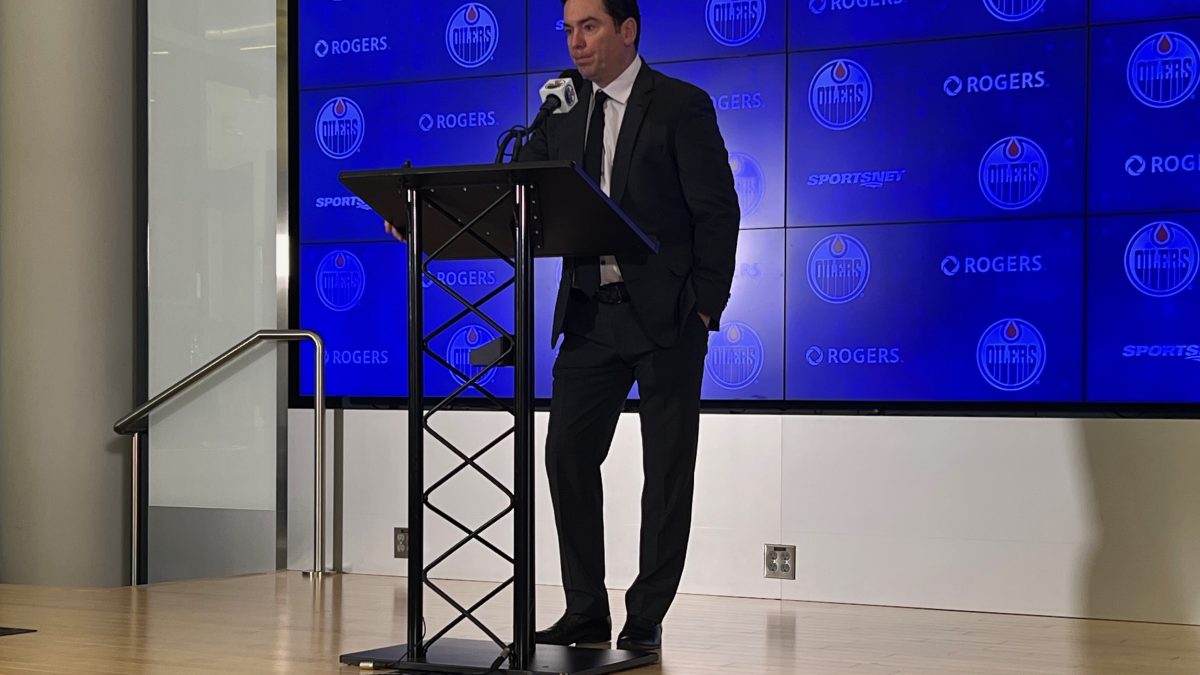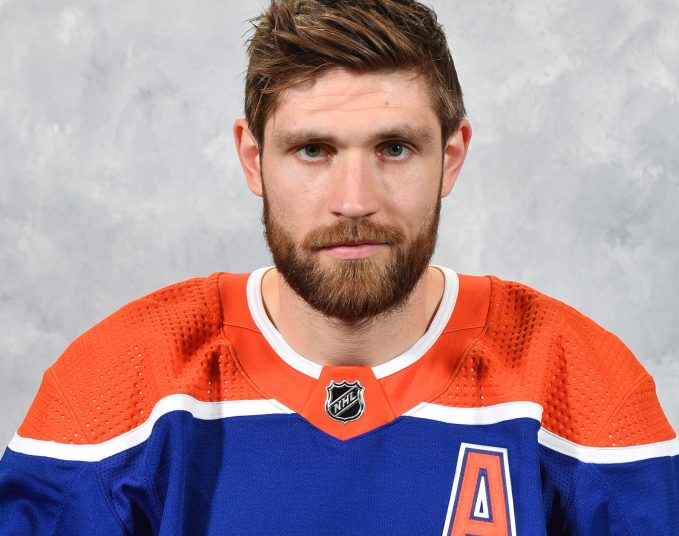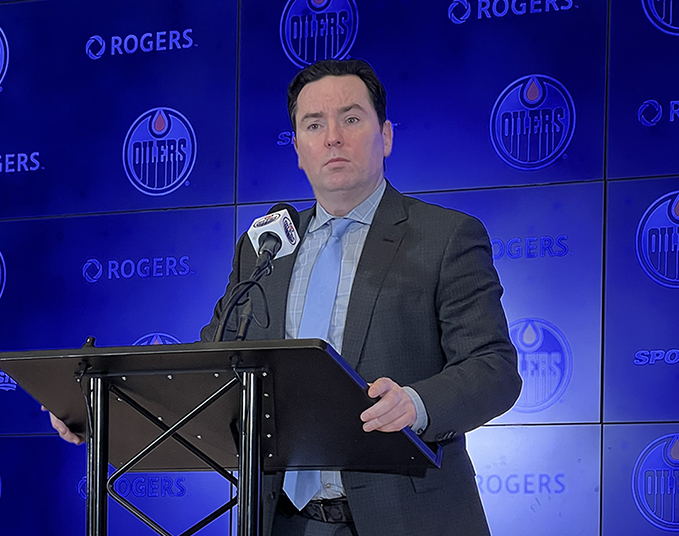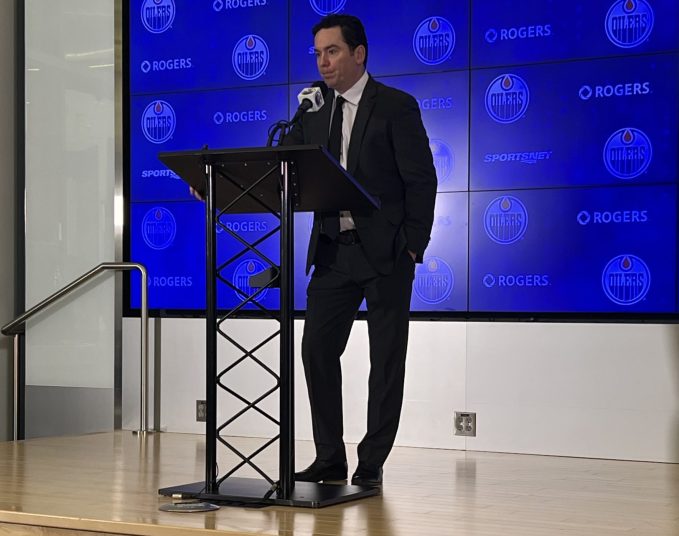Does overtime need a shot clock?
Sure, you’re thinking, this is something you’re putting out there just for the clicks. Yeah, well maybe that’s true, but it was something I kicked around with a press-box colleague right after the Oilers 4-3 overtime loss to Vegas Saturday night.
When three-on-three overtime was introduced, we saw teams trade chances with abandon. A breakaway chance that was stopped led to a breakaway goal at the other end on the ice. There were odd-man rushes galore. It was a video game come to life.
But, give coaches enough time, and they’ll figure out how to adjust. More and more, overtime has become a game of keepaway. And this is especially true when the Oilers send Leon Draisaitl and Connor McDavid on the ice. Opposition teams have figured out, with so much ice being available, keeping the puck, if you have no real intent of attacking, is relatively easy for players of NHL skill level. On Saturday, as the norm, McDavid and Draisaitl started the overtime period. The Golden Knights simply held the puck till the dynamic duo were gassed and had to get off.
“Teams try and do that, and you have to be more patient when that’s the case,” Draisaitl said. “You have to wait for your chance.”
Patience. Waiting. These aren’t things we associated with three-on-three overtime when it was first introduced.
Then, with Evander Kane, Ryan Nugent-Hopkins and Mattias Ekholm on the ice, Vegas controlled the puck for almost two minutes, sucking the life out of the Oilers skaters. Vegas could change their players, while the Oilers trio languished in their own end. By the time Nicolas Roy banged in his own rebound for the winner, the Oilers were left chasing shadows.
“When you’re breathing through your eyelids like that, it’s tough to sort some stuff out,” said coach Jay Woodcroft.
“When you’re tired, that’s why you have a structure you play towards. We had a coverage breakdown, and when there’s a coverage breakdown in overtime, it’s usually a grade-A chance.”
Vegas entered the game with a six-point lead on the Oilers in the Pacific Division. With the score tied with just a couple of minutes left in the third period, coincidental minors created a four-on-four situation. Vegas played keepaway then, too. The cynics up in the press box noted, heck, it was fine for the Knights to get the game to overtime, where they’d at least be guaranteed a loser point, and the worst the Oilers could do was get the deficit down to five points in the standings.
Woodcroft said we’re reading too much into things.
“No, they were trying to win the game, and we were trying to win the game. I think maybe the people in this media scrum make a lot over the standings, points and stuff like that. We’re in the moment, and we’re trying to win. The standings take care of themselves as you work your way down the stretch.”
Cagey and calculated, or not? This is the thing — Vegas’s win was a prime example of how overtime has evolved (or devolved, depending on your perspective). We’re seeing teams circle, skate backwards, and pass up anything but a perfect scoring chance. The strategy isn’t to trade chances, but to hold and hold and hold until you get the one perfect attempt on goal. Reckless abandon has been replaced with calculation.
Needless to say, this isn’t super exciting to watch. When the NHL decided to go with the three-on-three overtime format, I am sure the powers-that-be did not envision a defenceman getting the puck at the point, then skating it back to his own end. They didn’t imagine forwards retreating out of the offensive zone of their own free will, then circling in the neutral zone.
So, why not a shot clock? Lacrosse has found a way to make it work.
Sure, there are things that would need to be worked out. If a team didn’t get a shot off on time, how do you change possession?
And, you might be thinking, c’mon, a shot clock in hockey would be a gimmick. Sure is. You know what else is a gimmick? Three-on-three overtime. If we didn’t want hockey laden with gimmicks, we’d still have games ending in ties.
Savvy AF. Blunt AF. Edmonton AF.




